SU-27 40" WINGSPAN
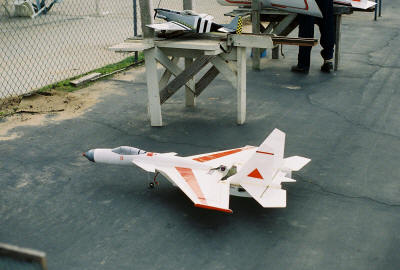
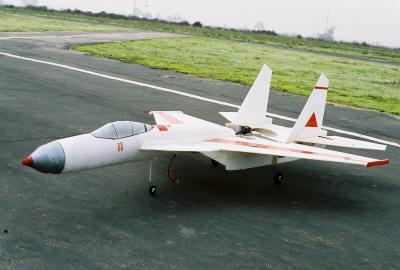

also at
http://www.rcgroups.com/forums/showthread.php?t=413554
Yet another exploration into the magnificent
world of the SU-27, a flat foam jet. This time, I am going XXXL. I saw the
Ikarus XXL model (videos
and photos ,
ikarus-modellbau.de)
and said to myself: "Eduardo, go for a bigger one".
I am still using the Foam from Staples (r), and
my brushed 400 motor. I will, eventually, get a brushless and LiPo
batteries. In the meanwhile, here are the specs.
You can buy it from Ikarus here:
http://www.ikarus-modellbau.de/
or from hobby Lobby here:
http://www.hobby-lobby.com/
You will need a V-Mixer:
http://www.ikarus-modellbau.de/ and here
http://www2.towerhobbies.com/
1ST TRY
Specs:
 |
40" wingspan, 1 meter |
 |
Engine 400. |
 |
Weight loaded: 653 grams.
(23 oz) |
 |
Wing area: 50 dm˛
(782 sq in) |
 | Wing load: 13 grams per
dm˛. I lost 2 g. per inch. Pretty good! |
 | Trust with GPMP0310
Great Planes 8 cells, 9.6v, 1100 miliamps: 300~350 g. (10.6 to 12 oz).
The weight to trust ratio is still 46%. Same as on the 24" model
|
 | Propeller 6 x 3.5
|
 | Theoretical speeds:
Stall 7 Km/h, Cruise 21 Km/h. |
Weight Distribution: (1 oz =
28.35 grams)
 | Foam: 250 grams |
 | Engine - 400: 90 grams |
 | Battery
GPMP0310 NiCd 8 cells: 245
grams of weight, 300 grams of trust with 6 x 3.5 |
 | Radio, Servos and ESC: 38 grams |
 | Parts, Rods, Carbon: 30 grams |
 | Total: 653 grams
(23 oz) |
Rational Deduction - Hypothesis:
The weight to trust
ratio is still 46%. Same as on the 24" model. However, the wing load
decreased by 2 grams per square decimeter. In theory, the plane should
have an equivalent of 100 more grams of trust than the previous 24" model.
Or, in other words, the plane is 100 relative grams lighter than the 24"
model. It should perform better. We will see...
PLANS
I modified Stringfly's plan. It's a jpg image on
top of a PDF with the right size. When printing, make sure to print in
several pages without borders nor any reduction. The vertical, horizontal
and diagonal grid lines I added will guide you when putting the
thirty-some pages together. It is a very low quality plan, but it is
enough for the creative mind.
Note: Note, in order to reinforce the structural
integrity, I added a carbon rod at the wing, where the control surfaces
mount. I also added another piece of depron to the tail (identical to the
one under the CG). The tail is too wobbly if you do not add this. I also
put a piece of fiber tape under the stabs and socked it with thin epoxy.
When mounting the servos, you might want to put
them in between the ailerons and the elevators. I put the receiver back in
the tail. I used an extension for the ESC/BEC and the battery which is
below the cockpit.
The CG is 7 1/4 inches from the trailing edge of
the main wing. I believe it can even go further ahead, up to the V joint
of the wing and front fuselage. This is a wild guess. I have no certainty
about the location of the CG. I am not familiar with delta wings.
Both control surfaces, stabs (elevators) and
ailerons move in the same direction (weird!). They should oppose each
other when attempting to change the attitude up or down, but in the case
of this plane, they don't. I gave very little dynamic range to the
ailerons by means of the control horns. The stab has more degrees than the
ailerons. Let the tail do the work. Avoid the ailerons from getting
too involved. This is a wild guess. I do not know a lot about the dynamics
in delta wing planes. I must add that I am not completely satisfied with
the configuration. I might add another set of servos for the ailerons once
I get a brushless.
PHOTOS
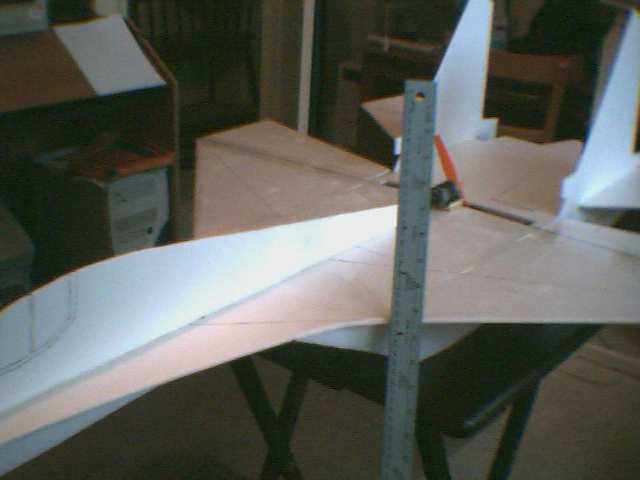
40" wingspan

One servo for stab and wing, same
direction.
The aileron control horn is on minimum drive, the elevator one on max.
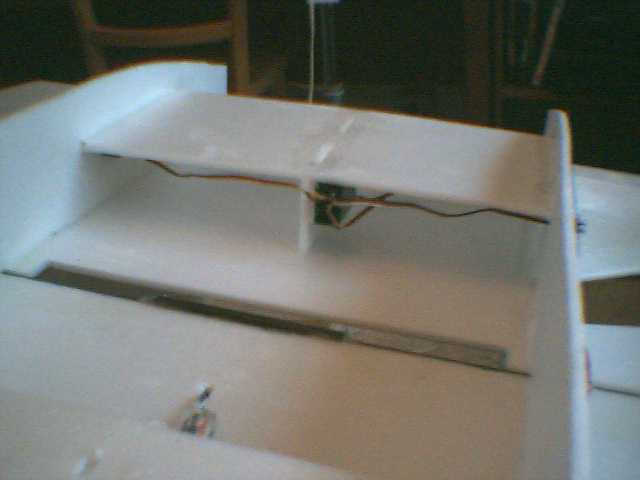
Added another piece of fanfold/depron
in the tail for structural support. The receiver in the tail. I also added
another piece of depron to the tail (identical to the one under the CG).
The tail is too wobbly if you do not add this.
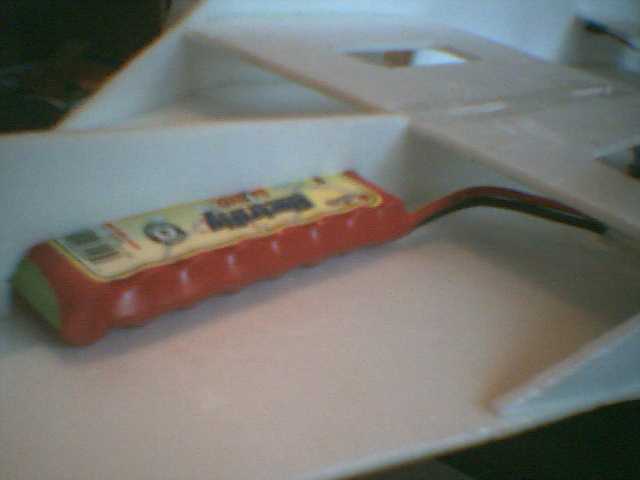
Battery
GPMP0310 NiCd 8 cells: 245 grams
of weight, 300 grams of trust with 6 x 3.5
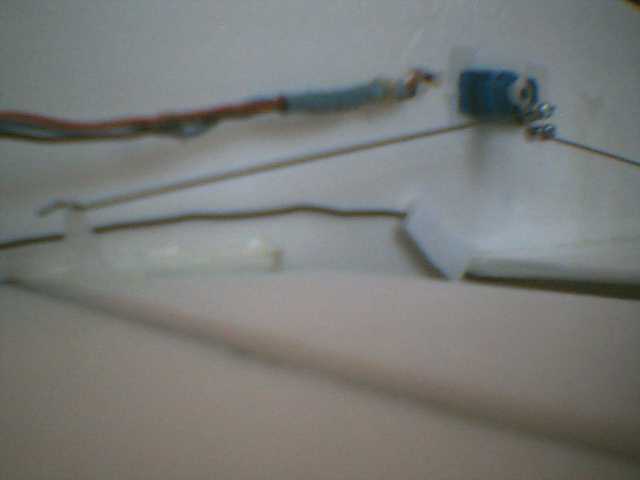
The aileron control horn is on
minimum drive, the elevator one on max.
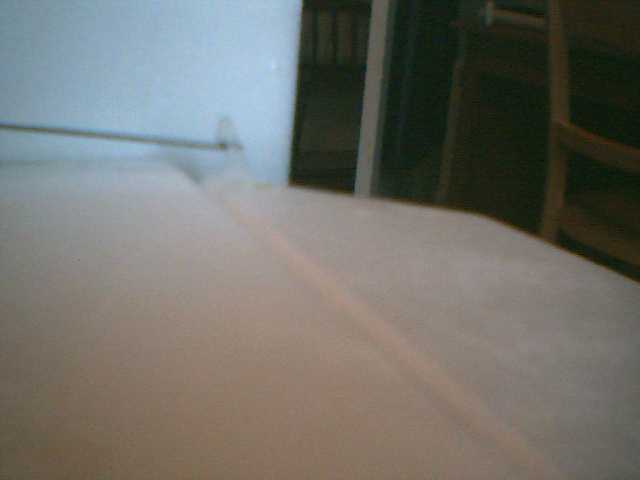
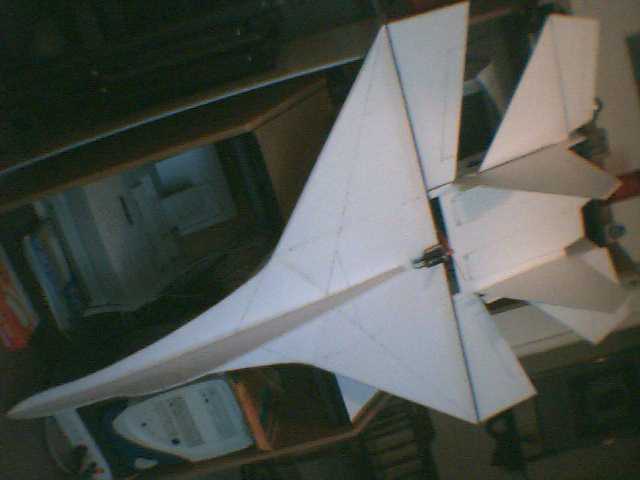
55" x 40" (140 cm x 101 cm)
Large!
This model was the inspiration of
it all:
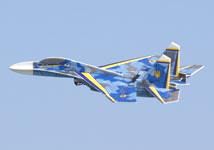
Please take notice how the two surfaces, elevator and aileron, move in the
same direction. Common sense would dictate that the flaps need to move
down and the elevator up to lift the nose of the plane. That is not the
case in this configuration. Watch the video
http://www.rcgroups.com/gallery/videos and photos. However, the
elevators have 200% more movement than the ailerons/flaps.

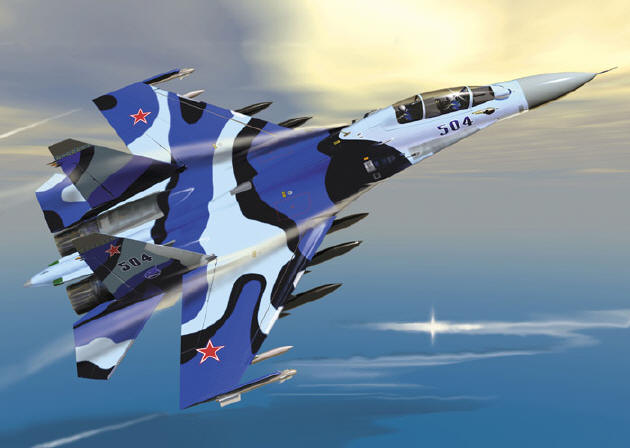
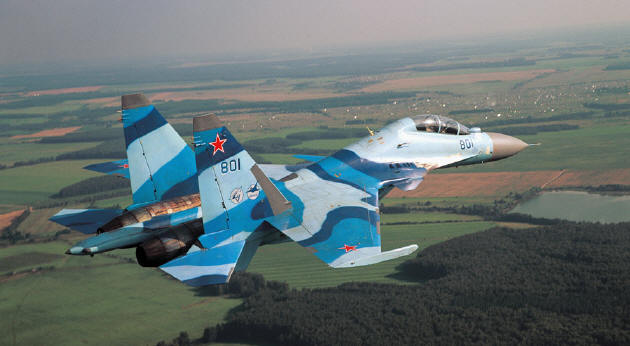
http://www.knaapo.ru/
It is probably the most amazing airplane of the XX Century. America should
bring Mr. Sukhoi, as it did with Herbert Von Braun.
August 12, 2005
I am very exited. It
is Friday. I just got off work. I arrive home, mow the lawn and grab my
plane to go to the field. I arrive at the field at around 1:30PM. The
field is closed so I decided to call one of the members at the store to
ask him for the combination to the lock. He tells me to call General
Chuck. I call Chuck and he tells me that it is too dangerous to fly alone.
He does not want me to fly by myself. He is afraid and concerned. I
understand what he says, yet I want to fly. I thanked him and left the
gates of the field looking for another place to fly my first flight on
this awesome plane. I arrived at the College, but it was
too crowded. I went to the lake, but they were charging the entrance
(something they don't usually do on Fridays). It was 2:30PM and the wind
was picking up with 15MPH gusts. I decided to come home and give it
another try tomorrow early in the morning.
August 13,
2005 The plane flies. However, changes need to be made.
I made a couple of turns around the circuit. The plane had no difficulty
taking off. With a trust to weight ratio of 46%, it is amazing it managed
to fly. The thrust should desirably be at least as much as its weight (700
gr.), and preferable twice its weight (1400 gr.).
Problem:
Plane too slow. Elevator, Ruder and ailerons too wobbly.
Cause: The wing does not have a profile. The flat configuration of the
wing creates too much drag. I added a simple profile by means of putting
another layer of Depron. This layer should fix both the drag and the
wobbly issues in the main wing. The drawback is that I lost all mobility
in flaps. The tail should have all the features necessary to control attitudes. I
also added a layer of depron in the tail (fin and stab) to prevent
wobbling. 2ND TRY
The image shows where the depron was placed. The
cost: 50 g. Do not forget to "shave" the edges to make them less resistant
to airflow.
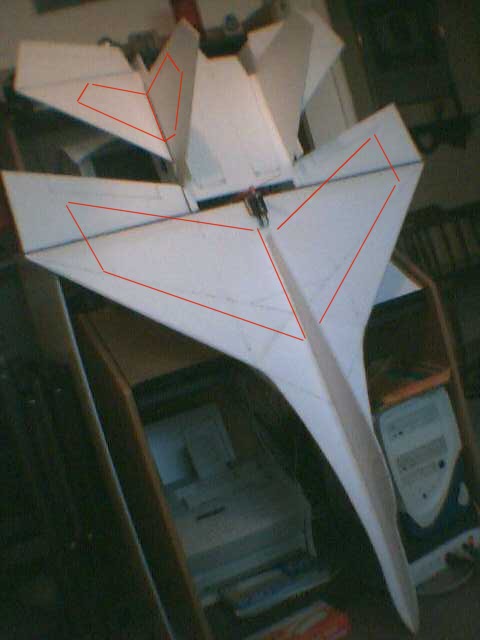
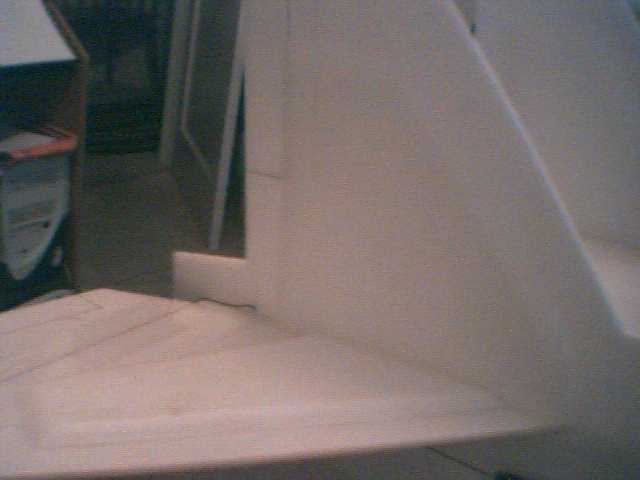
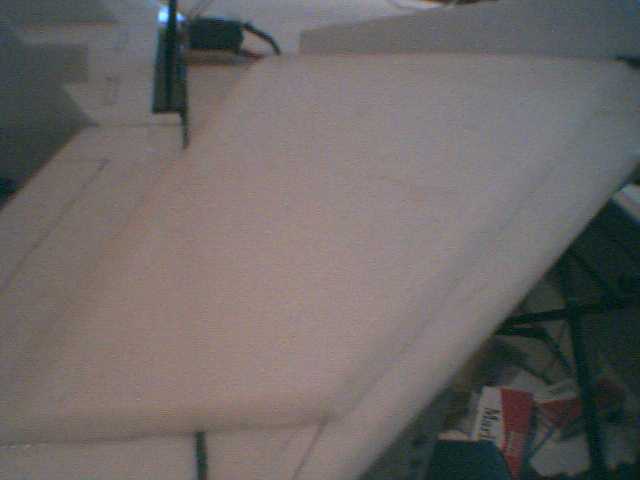
NEW MOTOR
Hacker A20-20L w/ Hacker X-20 ESC
Specifications |
RPM / V (Kv) |
Weight |
Battery |
Operating Current
(Amps) |
Peak Amps (15sec) |
Prop |
A20-20L |
1022 |
57g(2.01oz) |
3 LiPo |
1200-2100mah 6-15 |
19 |
10x4.7
|
SPEED CONTROLLER (ESC/BEC)
X-20
Current / Peak 10sec. 20 amps / 30 amps
Cells 3 LiPo / 800-1300mah
Bec/Servos Yes / 2-4
Size 1.65"x.91"x.35"
Weight .57 oz
TRUST:
Motor |
Gearing |
Prop |
Battery |
Amp Draw |
Thrust oz. |
gr. |
Hacker A20-20L |
None (Direct) |
APC
11x4.7 |
3s1p LiPo |
17 amps |
34.1 |
967 |
BATTERY: Magnum 2000 Li-Poly
Capacity |
Voltage |
No. cells |
Dimensions mm |
Weight |
Cont. Output |
Max output |
2000 mah |
11.1 Nominal |
3 |
67 x 41 x 26 |
144gms |
10c (20 maps) |
15C (30 amps) |
New Photos
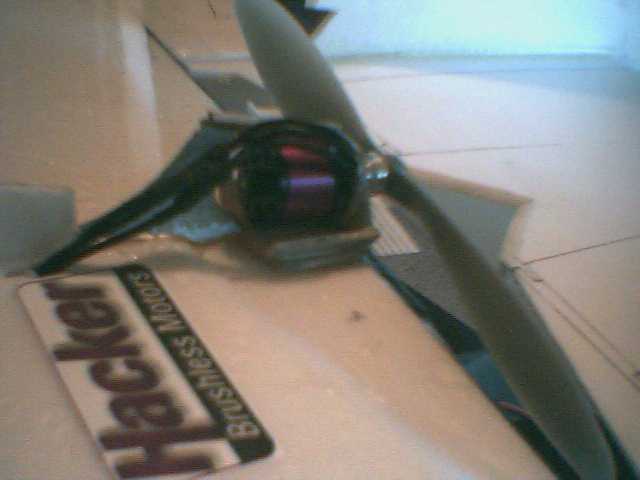
HACKER MOTOR WITH LARGE PROP. Please note I tried to make the slot for the
prop aero-dynamical. It vibrated a lot with a rectangular slot.
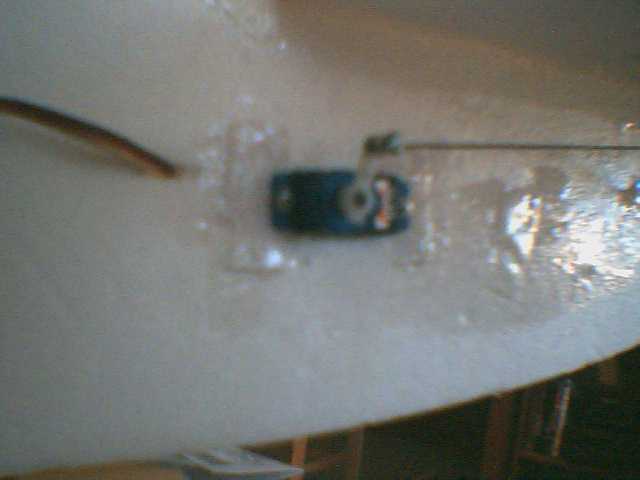
The servo only
handles one control surface: the stabs. The main wing is fixed.

The ESC with two
sided foam tape.
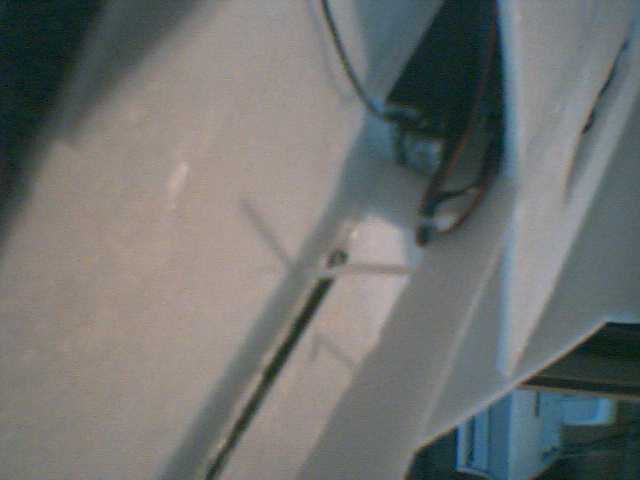
The JR receiver with foam tape. There is a slot for the battery reinforced
with carbon on both sides of the fuselage. It very well secured.
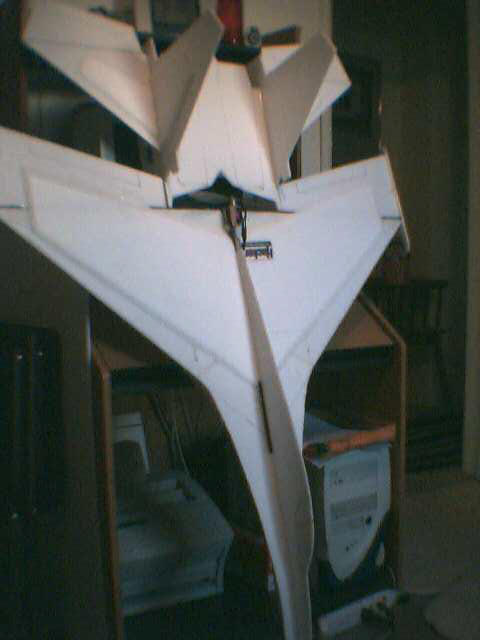
The big picture.
Please notice reinforcements for wings and tail.

Servo setup
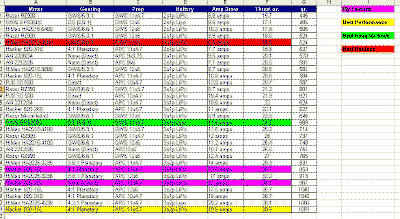
Motor Chart (click on it)
New Specs
Specs:
 |
40" wingspan, 1 meter |
 |
Motor: A20-20L w/ Hacker X-20 ESC.
|
 |
Weight loaded: 622 grams.
(22 oz) |
 |
Wing area: 50 dm˛
(782 sq in) |
 | Wing load: 12 grams per
dm˛. I lost 1 g. per sq dm. Pretty good! |
 | Trust with MAGNUM 3
Cells 2 AMPS, 11.6 Volts: 750~970 g. (26.5~34.1 oz).
The weight to trust ratio is more than 100%. WOW! |
 | Propeller APC 10 x 4.7 -
LP10047
|
 | Theoretical speeds:
Stall 7 Km/h, Cruise 20 Km/h, MAX 40 Km/h (theoretical). |
Weight Distribution: (1 oz =
28.35 grams)
 | Foam: 325 grams (with
reinforcements in wing, stabs and bottom of tail) |
 | Engine: 57 grams |
 | Battery
MAGNUM 3 Cells 2 AMPS, 11.6 Volts:
144
grams of weight |
 | Radio, Servos and ESC: 36.4 grams |
 | Parts, Rods, Carbon, Glue: 60 grams |
 | Total: 622 grams
(22 oz) |
Need to buy:
 | Charger: Apache Li-Poly 2500 $59.95 @
http://www.nesail.com/
|
 |
Motor/ESC: A20-20L w/ Hacker X-20 ESC.
$109.95 @
http://www.nesail.com/
|
 | Battery:
Magnum 3 Cells 2 AMPS, 11.6 Volts,
144
gr. 36.95 @
http://www.nesail.com/
|
 | Servos: 2 Micro or Nano @ $15
each |
 | Receiver: your choice $30 to $70 |
 | Radio: your choice: $90 to $300 |
 | 5 or 6 mm Carbon Rod: $6 |
 | FanFold or Depron foam. @ Staples
for only $10 |
TOTAL COST WITHOUT RADIO AND
BATTERY CHARGER: $160
If that is too much, you can buy a
smaller 30" for $70 @
http://www.ikarus-modellbau.de/ or even a smaller 16.8" @
http://www.ikarus-modellbau.de/
Other Jets @
http://www.hobby-lobby.com/electric_jets.htm
Motor Calculations (Disclaimer: I
am not an engineer. Data might be wrong.)
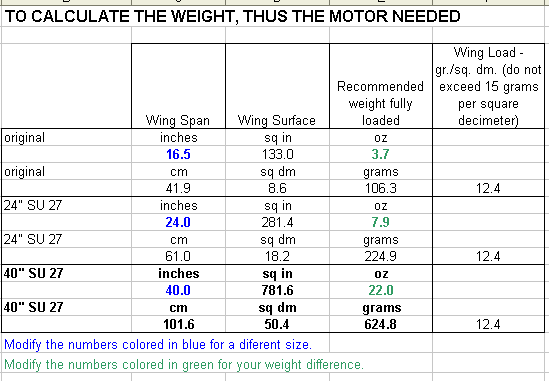
Plane propellers and motors for RC.htm
August 27, 2005
It flies great! It climbs like a rocket. It is
extremely light. The stall speed is as predicted or even less. The max
speed has not yet been tested. I flew the plane twice and made a couple of
loops. It looks great! Extremely stable plane. It landed
exactly where I wanted it to land, even with 8MPH turbulent winds! It is a
very docile plane! On the next flight, I might move into
aerobatics. I will need more responsive surfaces on the aileron axis to be
able to do it. I noticed two problems:
Lack
of control in one of the axis. I do not have enough ailerons (the tail
does not quite cut it as the only surface in charge). At the current rate,
the plane needs a second or two to roll. I will have to do some changes. I
might put another servo in charge ailerons restoring them as movable
surfaces. As you recall, I was forced to sacrifice them to strengthen the
wing. Will keep you posted.
Another problem is the
right push rod. It got stuck while flying. The plane kept on banking left.
My response was not to fight it and let it turn when it happened. Thank
God it got loose again. I suspected this could have potentially happened
for my pushrod holder had an treacherous angle. I will be changing the
pushrod rails. 3RD TRY
September 3, 2005
I have the ailerons installed. It flies great. I will put
the pictures shortly, and maybe a video. It is fast and docile. I looks so
real when it flies. I can also be so slow that landings are a controlled
stall at 1MPH. Looks great!
September 5, 2005
Another two flights. I tried some aerobatics. I rolled,
figured 8's and loops. If I were a better flier, it would have looked much
better. The plane flies awesome. It looks very realistic on the air. I
will keep practicing until I become more skilled and able. I am a bit
"dirty" performing the maneuvers. The plane is so forgiving and docile
that it makes me look good, even though I am not an skilled pilot.
One guy at the field is building a balsa version with a gas engine.
Another one asked me to make him one. I am going to share the plans and
the ideas and let each one make its own.
I am trying to
figure out a way of putting retractables. I would love to take off from
the ground and land. I need to keep the weight extremely low. If anyone
has ideas, please share. LATEST PHOTOS

Monokote. Iron set on medium
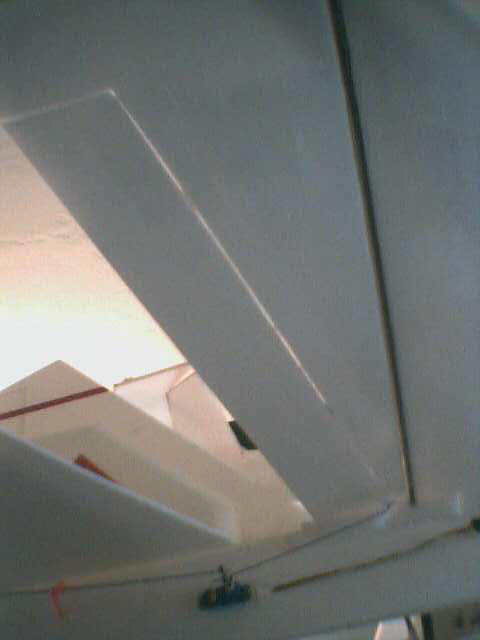
I
added Ailerons
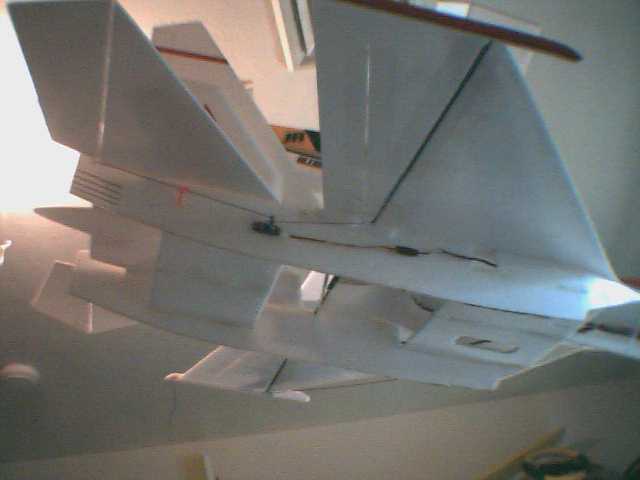
Please notice reinforcement for tail
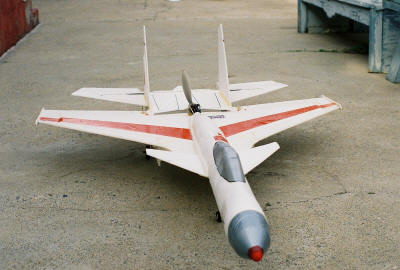
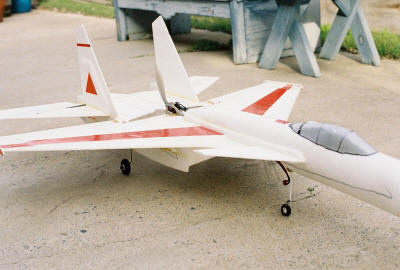
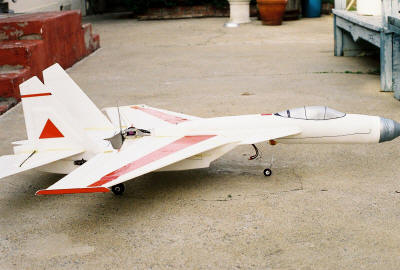

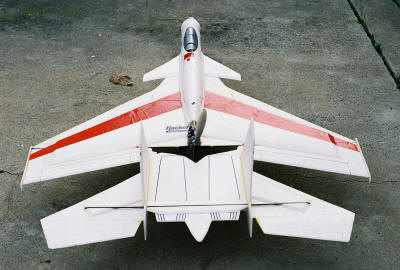
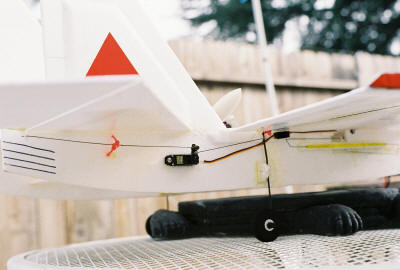
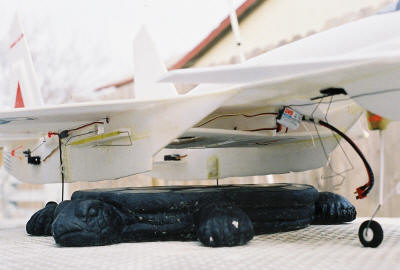
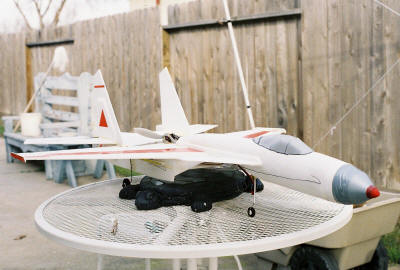
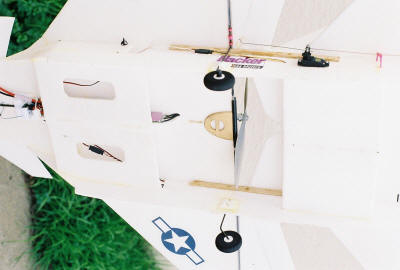
intranet video
|